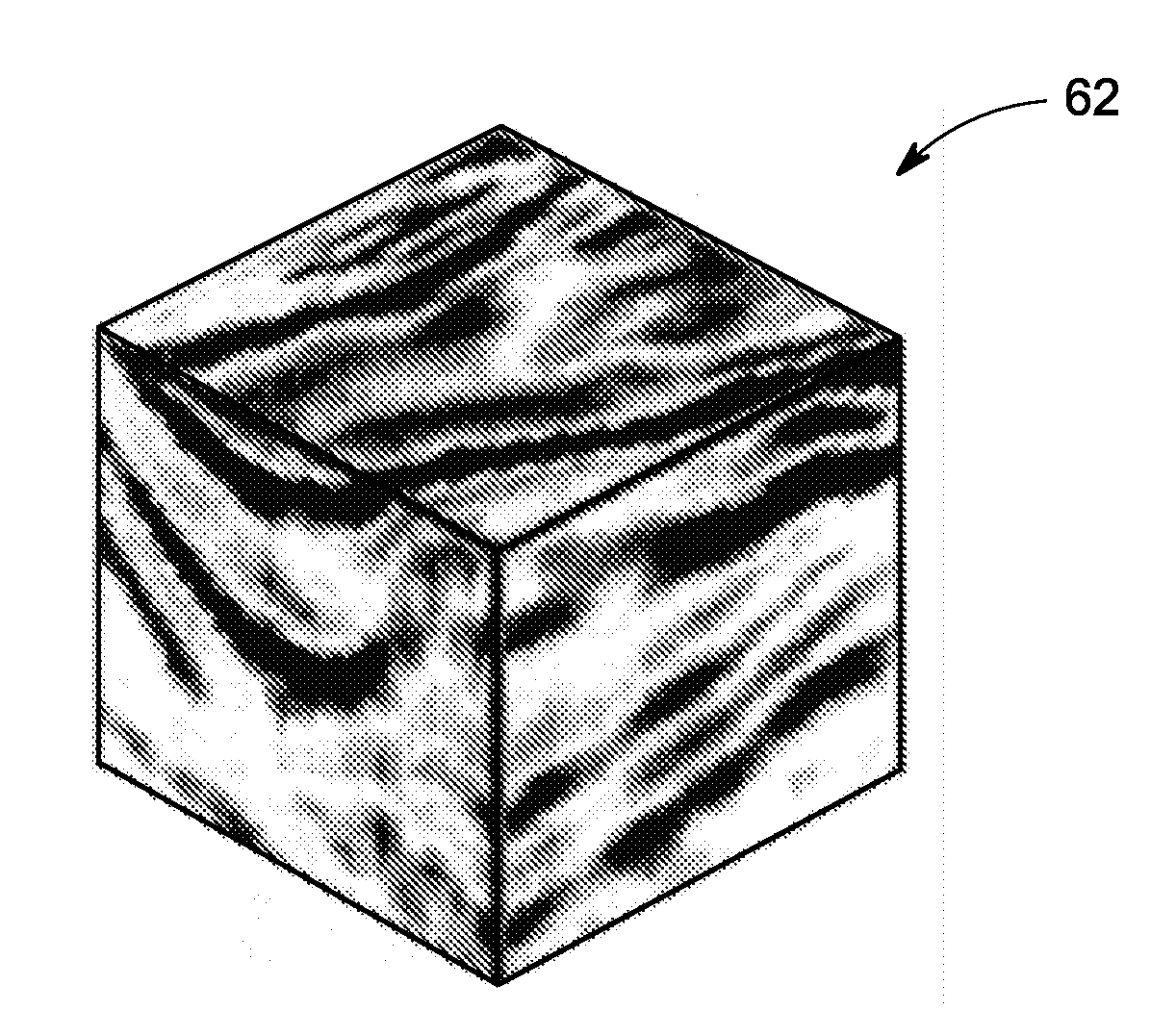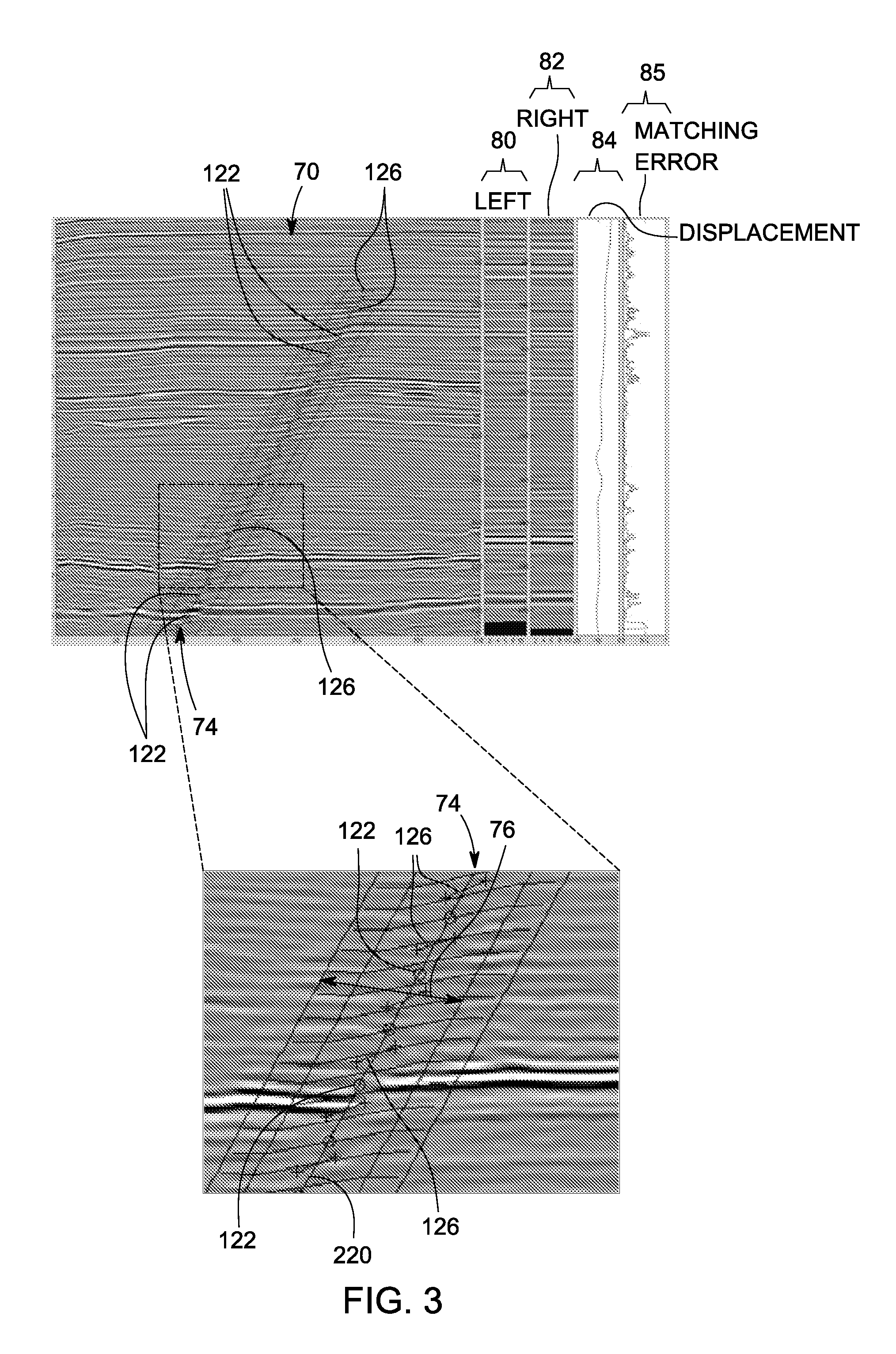Computer-assisted fault interpretation of seismic data
a fault interpretation and computer-aided technology, applied in the field of seismic data identification and analysis of geologic faults, can solve the problems of laborious, inefficient existing manual interpretation approaches, and inability to accurately identify and analyze faults
- Summary
- Abstract
- Description
- Claims
- Application Information
AI Technical Summary
Benefits of technology
Problems solved by technology
Method used
Image
Examples
Embodiment Construction
[0023]Existing approaches to structural fault interpretation in seismic data may involve determining the fault surfaces and matching horizons across faults to determine a fault displacement map. Automated fault positioning and surface extraction in these conventional approaches are based on estimating the discontinuity of horizons on two-dimensional (2D) slices or by discontinuity enhancement, thinning, and surface extraction in three-dimensions. Fault surface extraction is frequently referred as “fault tracking” and is based on first calculating an attribute volume such as coherency or discontinuity, and then segmenting the low (in the context of coherency measurement) or high (in the context of discontinuity assessment) response regions in the attribute volumes. User-guided fault displacement algorithms typically assume that the fault surface is simple, such as a plane, and is already calculated using a fault tracking algorithm. Additionally, horizons on each side of the fault are...
PUM
 Login to View More
Login to View More Abstract
Description
Claims
Application Information
 Login to View More
Login to View More - R&D
- Intellectual Property
- Life Sciences
- Materials
- Tech Scout
- Unparalleled Data Quality
- Higher Quality Content
- 60% Fewer Hallucinations
Browse by: Latest US Patents, China's latest patents, Technical Efficacy Thesaurus, Application Domain, Technology Topic, Popular Technical Reports.
© 2025 PatSnap. All rights reserved.Legal|Privacy policy|Modern Slavery Act Transparency Statement|Sitemap|About US| Contact US: help@patsnap.com



